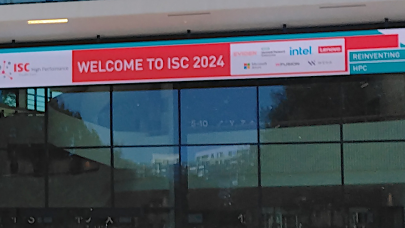Nvidia today formally launched Cambridge-1, its SuperPOD-based supercomputer that is located in the U.K. and dedicated to life sciences research. At nearly 10 petaflops (Rmax) and 400 petaflops AI compute, Cambridge-1 finished 41st on the June Top500 List, is now the fastest supercomputer in the UK, and will be number 12 in Europe, said Nvidia.
Announced last fall, Cambridge-1 is wholly-owned and operated by Nvidia. While it represents a different go-to-market approach from Nvidia’s usual direct sales model, it is in line with Nvidia’s decade-long efforts in healthcare. The system is located at a facility operated by Nvidia partner Kao Data.
Nvidia CEO Jensen Huang is quoted in the official announcement, “Cambridge-1 will empower world-leading researchers in business and academia with the ability to perform their life’s work on the U.K.’s most powerful supercomputer, unlocking clues to disease and treatments at a scale and speed previously impossible in the U.K. The discoveries developed on Cambridge-1 will take shape in the U.K., but the impact will be global, driving groundbreaking research that has the potential to benefit millions around the world.”
Cambridge-1 represents a $100 million investment according to Nvidia, which touted early projects with “AstraZeneca, GSK, Guy’s and St Thomas’ NHS Foundation Trust, King’s College London and Oxford Nanopore Technologies [on] efforts to develop a deeper understanding of brain diseases like dementia, using AI to design new drugs, and improving the accuracy of finding disease-causing variations in human genomes.”
The new system is named for University of Cambridge where Francis Crick and James Watson and their colleagues famously worked on solving the structure of DNA. Leveraging Nvidia’s SuperPOD architecture, it will have 80 DGX A100s, 20 terabytes/sec InfiniBand, 2 petabytes of NVMe memory.
At the announcement last fall, four focus areas were cited:
- Joint industry research– Solving large-scale healthcare and data-science problems which otherwise could not be tackled due to their size, resulting in improved patient outcomes, increased success rates and decreased overall healthcare costs.
- University-granted compute time – Access to Nvidia GPU time will be donated as a resource to specific studies to contribute to the hunt for cures.
- Support AI startups– Nvidia will provide opportunities to learn — and it will collaborate with startups to nurture the next generation and provide early access to AI tools.
- Educate future AI practitioners– The system will serve as a destination for world-class researchers and provide hands-on experiences to the next generation.
That still seems to be the long-term goal.
Cambridge-1 will use Nvidia’s BlueField2 datacenter processing unit (DPU) technology which is just coming to market now. The more extensive BlueField3 DPU is expected next year. Broadly DPUs act as engines to handle security, networking, and storage management – offloading those tasks usually handled by the host CPU. Nvidia has said BlueField technology is a key enabler of its native cloud supercomputing strategy by enabling secure isolation of users as well as handling housekeeping chores.
To some extent Cambridge-1 is a forerunner example of the cloud-native supercomputer strategy with diverse external users using the same system. Much the time leading to launch, said Nvidia, has been spent working with the initial user organizations to iron out protocols and ensure, for example, compliance with data confidentiality and security requirements from the UK NHS.
No changes or additions to the original Cambridge-1 architecture were announced today, but Nvidia did provide snapshots of early work. Here are brief excerpts from the official announcement:
- “GSK’s research and development approach includes a focus on genetically validated targets, which are twice as likely to become medicines and now make up more than 70 percent of its research pipeline. To maximize the potential of these insights, GSK has built state-of-the-art capabilities at the intersection of human genetics, functional genomics, and artificial intelligence and machine learning. “Advanced technologies are core to GSK’s R&D approach and help to unlock the potential of large, complex data through predictive modeling at new levels of speed, precision and scale,” said Kim Branson, senior vice president and global head of AI-ML at GSK. “We are pleased to have the opportunity to partner with Nvidia to deliver on GSK’s drug discovery ambition and contribute to the U.K.’s rich life sciences ecosystem — both aims that have patient benefit at the centre.”
- “King’s College London and Guy’s and St Thomas’ NHS Foundation Trust are using Cambridge-1 to teach AI models to generate synthetic brain images by learning from tens of thousands of MRI brain scans, from various ages and diseases. The ultimate goal is to use this synthetic data model to gain a better understanding of diseases like dementia, stroke, brain cancer and multiple sclerosis and enable earlier diagnosis and treatment. As this AI synthetic brain model can generate an infinite amount of never-seen brain images with chosen characteristics (age, disease, etc.), it will allow a better and more nuanced understanding of what diseases look like, possibly enabling an earlier and more accurate diagnosis.
- Oxford Nanopore Technologies’ long-read sequencing technology is being used in more than 100 countries to gain genomic insights across a breadth of research areas — from human and plant health to environmental monitoring and antimicrobial resistance. Oxford Nanopore deploys Nvidia technology in a variety of genomic sequencing platforms to develop AI tools that improve the speed and accuracy of genomic analysis. With access to Cambridge-1, Oxford Nanopore will be able to carry out tasks relating to algorithm improvement in hours rather than days. These improved algorithms will ensure improved genomic accuracy for greater insights and quicker turnaround times in scientists’ hands.
There was a small bit of confusion on the Top500 list which listed the U.S. as the country of record. Nvidia said it was asking the Top500 to change this to the U.K. Presumably the Cambridge-1 would also have an impressive score on the Green500 but Nvidia did not run that benchmark.
In answer to an email query, Nvidia said, “All NVIDIA DGX SuperPOD systems share the same energy efficient design which extends beyond the component DGX systems to the overall data center design including network switches, management servers, rack power distribution units (PDUs), hot or cold aisle airflow containment, and other features. The Green500 list, a common list for comparing energy efficiency of supercomputers, is derived from the Top500 list using optional energy use metrics that can be reported with Top500 submissions.
“NVIDIA did not measure the power usage of Cambridge-1 while running the Top500 test and thus per the Green500 list policy, the system was listed next to the lowest scoring DGX SuperPOD, on older DGX-2H SuperPOD. For comparison purposes, NVIDIA suggests one considers the #5 Green500 entry, which is another NVIDIA owned and operated DGX SuperPOD for which we did measure and submit energy usage for Top500/Green500 rankings.”
It will be interesting to watch not only the results from the important biomedical research being undertaken on Cambridge-1, but also interesting to watch how its list of clients expands and, perhaps, whether the idea of vertically-specialized, Nvidia owned-and-operated supercomputers takes hold.
The formal inauguration will be held tomorrow (Wednesday) at 6am PDT (2pm BST). It will highlight the research to be conducted on Cambridge-1 and is open to the public.
Link to the video event: https://www.nvidia.com/en-us/industries/healthcare-life-sciences/cambridge-1/
Link to Nvidia announcement: https://nvidianews.nvidia.com/news/nvidia-launches-uks-most-powerful-supercomputer-for-research-in-ai-and-healthcare





























































